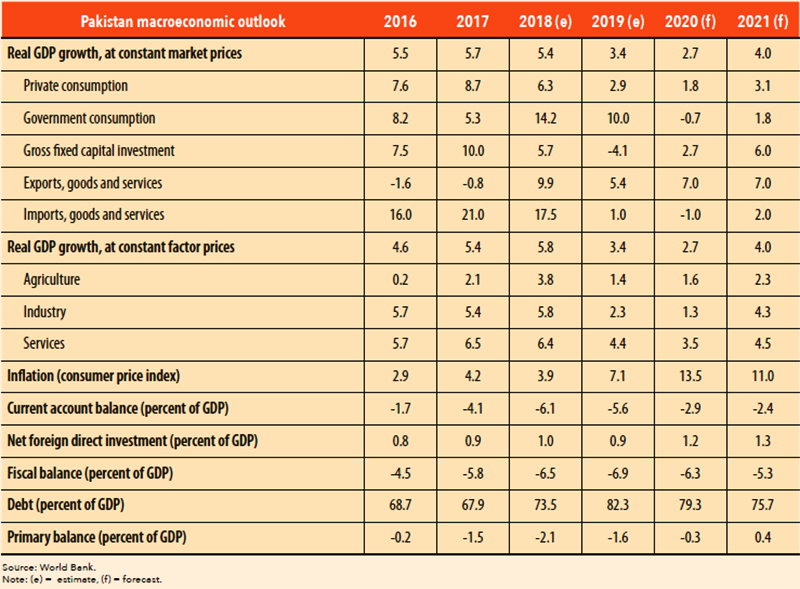Pakistan's GDP growth to shrink to 3.4pc this fiscal: World Bank

Pakistan's economic growth, after reaching an 11-year high of 5.8 per cent in FY18, is expected to see a decline over the next two years, the World Bank has predicted.
GDP growth will decelerate to 3.4pc in fiscal year 2018-19 and further drop to 2.7pc in FY20 as fiscal and monetary policies are tightened to address macroeconomic imbalances, said the latest edition of the South Asia Economic Focus: Exports Wanted published on Sunday.
The report comes the same week, the United Nations and the Asian Development Bank, both, painted a gloomy picture of Pakistan's position in the region with regard to its GDP growth in 2019.
According to the World Bank report, which provides a bi-annual regional economic update, while domestic demand is expected to contract as a result of the policies, net exports will see a gradual increase.
On a positive note, the World Bank has noted that structural reforms can revive Pakistan's economic growth.
“As macroeconomic conditions improve, and a package of structural reforms in fiscal management and competitiveness is implemented, growth is expected to recover to 4.0 per cent in FY21,” said the report.
However, it added as a caveat: "This baseline scenario assumes stable international oil prices and reduced political and security risks."
On the supply side, growth in the services sector, which has been leading growth in the past, is projected to decline to 4.4pc in FY19 compared with 6.4pc in FY18. The agriculture and industrial sectors will also experience a decline in growth in FY19 and FY20.

It further stated that inflation is "expected to rise to 7.1 per cent (average) in FY19 and projected to reach 13.5 per cent in FY20 as a result of further exchange rate depreciation pass-through".
The report notes that the country's trade deficit is forecasted to "remain elevated during FY19 but to narrow in FY20 and FY21 as the impacts of currency depreciation, domestic demand compression, and other regulatory measures to curb imports set in".
It further states that the flow of remittances is likely to support the current account balance next year. A more stable external environment will also support a pick-up in economic activity starting from FY21.
"Pakistan's growth must be driven by investment and productivity, which will put an end to the boom and bust cycles that affect the country every few years," said Illango Patchamuthu, World Bank Country Director for Pakistan, in a follow-up press release to the report.
“It is entirely possible for Pakistan to transform its regulatory environment and reduce the cost of doing business. On the revenue front, reforms to improve tax administration and widen the tax base are critical," he said.
"Over the adjustment period and beyond, actions outlined in the recently announced Ehsas Programme can protect the poor and vulnerable through social safety nets and safeguarding public spending on health and education,” Patchamuthi added.
S. Asia needs more exports to maintain growth
The press release by the World Bank also noted that overall, across South Asia, import levels saw a much higher growth than exports in the past two years, reflecting a reversal in the region's export dynamics since the early 2000s.
"Strong domestic demand, fueled by a consumption and investment boom, resulted in high import growth of 14.9 per cent in 2017 and 15.6 per cent in 2018, which is nearly twice as high as the region's export growth," said the statement.
"In comparison, exports grew by only 4.6 per cent in 2017 and 9.7 per cent in 2018," it added.
According to the report, South Asia holds on to its top spot as the world's fastest growing region, with growth set to rise to 7pc in 2019, then 7.1pc in 2020 and 2021, "but the region needs to increase its exports to sustain its high growth and reach its full economic potential".













































